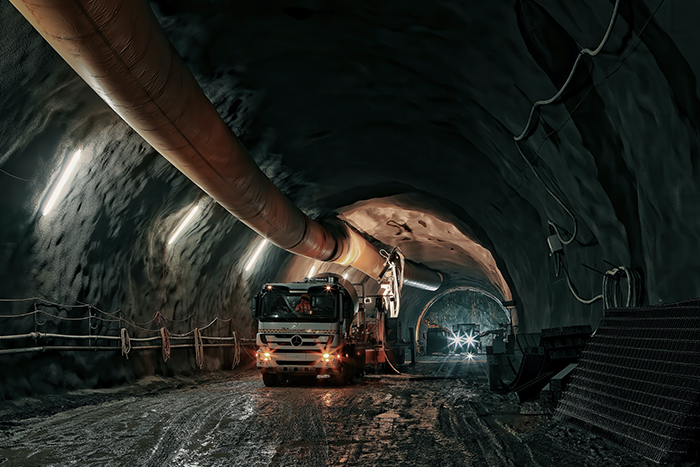ISR uranium mining is responsible for nearly all U.S. uranium mining (except for recovery through phosphates). More than 20 percent of global uranium mining now comes from the in situ recovery method, predominantly through In Situ Leach (ISL) mining in Kazakhstan and in Australia.
Because of the large number of ISR uranium projects on the horizon within the next ten years, both in the United States, Kazakhstan and Australia, the in situ (ISR) uranium mining method will provide U.S and global utilities with tens of millions of pounds of newly mined uranium by 2020.
We discussed the basics of ISR uranium mining with Bill Boberg, chief executive of UR-Energy, whose company plans to mine Wyoming’s Lost Creek and Lost Soldier uranium deposits using the in situ recovery uranium mining method in 2008. We discussed many of the environmental type questions our readers wanted more information about.
StockInterview: How did the uranium actually get into the sandstones and become a roll front deposit?
Bill Boberg: Natural processes caused the uranium deposit to be in the aquifer in the first place. The uranium was deposited by the naturally flowing ground water when the natural oxygen in the ground water was exhausted due to natural chemical reactions with minerals and organic material contained in the sands of the aquifer itself. Uranium is still being carried by ground water flowing to the deposits. The flowing ground water is also naturally leaching parts of the deposit and re-depositing it a short distance away. This is really a very common natural process that’s happening in many aquifers.
StockInterview: When you mine using the ISR method, do you destroy or contaminate an aquifer where you are mining?
Bill Boberg: There are probably thousands of uranium deposits throughout the world of varying quality in sandstones, which are also aquifers. Only a few hundred of these will contain sufficient uranium to eventually be mined. It’s there, and if it is mined, most of the uranium that was in the aquifer will actually be removed from the aquifer instead of staying there. The in situ (ISR) mining process simply reverses the natural process that placed the uranium there in the first place. It’s really a pretty simple process. The restoration process, after the mining is completed, actually returns the aquifer back to its pre-mining conditions. There is no way the aquifer is contaminated or destroyed (by ISR mining).
StockInterview: Many environmentalists claim that by removing the uranium, you are changing the aquifer. Is the aquifer much different than before mining took place?
Bill Boberg: It’s probably not a lot different. The formation of uranium deposits in the sandstones is a result of oxygenated ground waters that came from the surface, carrying uranium which is deposited when the oxygen is depleted or finally exhausted. The deposit is in place in the sandstone. As fresh oxygen is brought down to that point, it will re-dissolve and move the uranium further along.
StockInterview: How do you know where in the deposit to inject the fresh oxygen?
Bill Boberg: On one side of the deposit is what we call altered or oxidized sands. On the down dip side of the deposit are the reduced sands. There is no oxygen in those sands. Any fluid that carries uranium into the reduced sands is going to use up the oxygen and immediately deposit the uranium by natural processes. The mining process adds additional oxygen to the water in the deposit itself to cause the uranium to go into solution. Then, it can be pumped up to the surface. The area of reduced sand that is downstream from the deposit is still there. It is the contact between the altered or oxidized sand and the reduced sand that causes the uranium to be precipitated into the sand itself. As the natural ground water flow carries the uranium into the reduced sands, natural processes will cause the uranium to precipitate out of the ground water, if there is some that did not get pumped to the surface and recovered during the mining operation.


